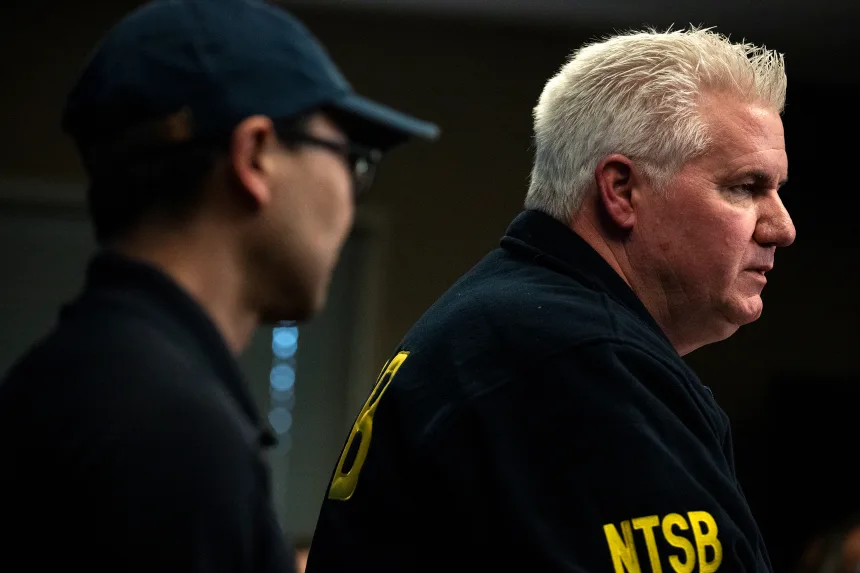Tragic Crash at Louisville Airport Claims 14 Lives
On Tuesday, November 4, 2025, Louisville Muhammad Ali International Airport (SDF) witnessed a devastating aviation accident. UPS Flight 2976, a 34-year-old McDonnell Douglas MD-11 cargo plane, crashed shortly after takeoff around 5:15 p.m. local time, en route to Daniel K. Inouye International Airport in Honolulu, Hawaii.
The cargo plane carried approximately 38,000 gallons of jet fuel, and the resulting fire and explosions spread to nearby facilities, including a large recycling center. The scene was described by local officials as apocalyptic, with thick plumes of smoke visible for miles.
By Saturday, November 8, authorities confirmed 14 fatalities, including the three crew members: Captain Richard Wartenberg, First Officer Lee Truitt, and International Relief Officer Captain Dana Diamond. At least 12 others sustained injuries. Louisville Mayor Craig Greenberg stated that all missing individuals have been accounted for and that the death toll is not expected to rise. Among the victims is believed to be a young child.

Airport and Community Response
The crash forced shelter-in-place orders around 7501 Grade Lane. For safety, Louisville Gas & Electric de-energized nearby power lines and isolated portions of the gas system. Residents immediately near the crash site were advised not to drink tap water until further notice, though authorities confirmed that water and air quality in surrounding neighborhoods remained safe.
Governor Andy Beshear declared a State of Emergency to expedite deployment of resources, including the Kentucky National Guard, and to provide support for recovery and response efforts.

FAA Grounds All MD-11 Aircraft
In response to the tragedy, the Federal Aviation Administration (FAA) issued an immediate grounding order for all MD-11 and MD-11F aircraft pending inspections. The FAA is working closely with UPS while the National Transportation Safety Board (NTSB) leads the crash investigation.
Investigators have already recovered the plane’s engine, and debris analysis is ongoing. Officials emphasize that the investigation may take weeks to months to determine the precise cause.
Timeline of UPS Flight 2976
| Time (Local, SDF) | Event |
|---|---|
| 5:15 p.m., Nov. 4 | UPS Flight 2976 takes off from Louisville en route to Honolulu. |
| Shortly after takeoff | Plane crashes on airport property, causing explosions and large fire. |
| Evening, Nov. 4 | More than 100 first responders work over six hours to contain flames. Fire spreads to nearby recycling facility. |
| 11 p.m., Nov. 4 | Major fires brought under control. Hotspots continue to burn; containment may take a week. |
| Nov. 5-6 | Airport begins phased reopening; several taxiways remain closed. UPS Worldport operations halted; Next Day Air service canceled. |
| Nov. 6-7 | Recovery efforts continue; engine removed for examination. Local residents near crash site advised to avoid tap water. |
| Nov. 8 | Mayor confirms all missing persons accounted for; 14 fatalities confirmed. FAA grounds all MD-11 aircraft. NTSB investigation continues. |
Analysis: Factors and Industry Implications
Aircraft Age and Fuel Load
The MD-11 involved was built in the early 1990s. Fully fueled for a long-haul flight to Hawaii, the aircraft’s high fuel load contributed to the intensity of the fire, complicating emergency response efforts.
MD-11 Safety Considerations
The MD-11 has a long operational history in cargo aviation, but pilots note it is more challenging to land and maneuver than newer aircraft. Past incidents highlight the importance of pilot training on go-around procedures and approach stability.
Community and Emergency Management
Local officials praised the swift response from firefighters, law enforcement, and first responders, highlighting coordinated emergency management. The proactive shelter-in-place orders, utility shutdowns, and State of Emergency declaration likely minimized additional harm.
Looking Ahead: Lessons and Recommendations
- 1.Enhanced Safety Protocols for Older Aircraft
- Ground inspections of all MD-11 aircraft, review of mechanical and structural systems.
- Consider accelerated fleet modernization or phase-out plans.
- 2.Emergency Preparedness
- Maintain clear evacuation routes and shelter protocols near cargo hubs.
- Ensure rapid communication of water, air, and utility safety information to nearby residents.
- 3.Pilot Training
- Reinforce approach stability procedures and decision-making for go-arounds.
- Increase simulator sessions for high-fuel-load takeoffs and emergency scenarios.
- 4.Public Communication
- Transparent, timely updates reduce anxiety and confusion during aviation incidents.
- Collaboration between FAA, NTSB, and local government sets a strong precedent for crisis management.
Final Thoughts
The UPS Flight 2976 crash is a sobering reminder of the risks inherent in aviation, particularly in cargo operations with older aircraft. While the investigation is ongoing, the bravery of first responders, coordinated community efforts, and rapid FAA actions demonstrate the resilience of both aviation systems and the Louisville community.
As the NTSB continues its investigation, lessons learned from this tragedy will help strengthen aviation safety protocols, ensuring that similar events are prevented in the future.
FAQ: UPS Flight 2976 Crash — What People Are Asking
Q1: What happened to UPS Flight 2976?
UPS Flight 2976, a McDonnell Douglas MD-11 cargo aircraft, crashed shortly after takeoff from Louisville Muhammad Ali International Airport on November 4. The crash caused a large explosion and multiple structure fires near the airport.
Q2: How many people died in the crash?
Officials confirmed 14 fatalities and at least 12 injuries. The Louisville mayor stated that all missing individuals have been accounted for and that the death toll is not expected to increase.
Q3: Who were the pilots on board the aircraft?
UPS released the names of the three crew members killed in the crash:
- Captain Richard Wartenberg
- First Officer Lee Truitt
- International Relief Officer Captain Dana Diamond
Q4: Where was the plane headed?
The aircraft was departing Louisville and was scheduled to fly to Daniel K. Inouye International Airport in Honolulu, Hawaii.
Q5: What caused the massive fire?
Flight 2976 was fully fueled to fly to Hawaii, carrying approximately 38,000 gallons of aviation fuel. The fuel load contributed to a rapid and intense fire that spread to nearby facilities.
Q6: Why did the FAA ground all MD-11 aircraft?
Following the crash, the Federal Aviation Administration (FAA) issued an emergency grounding of all MD-11 and MD-11F aircraft for inspection. This action ensures safety while the investigation is underway.
(Note: grounding decisions do not imply a confirmed cause.)
Q7: Who is leading the investigation?
The National Transportation Safety Board (NTSB) is leading the investigation. The FAA is supporting and coordinating with UPS but will not determine the cause — NTSB will.
Q8: Is it safe to drink water near the crash site?
Kentucky’s governor advised that residents immediately near the crash site should avoid drinking tap water until further notice. Other areas of Louisville are considered safe.
Q9: Are airport operations back to normal?’
Louisville Muhammad Ali International Airport has reopened, though some taxiways remain closed due to the ongoing investigation. UPS Worldport temporarily halted operations and canceled Next Day Air flights on Tuesday night but has since resumed most operations.
Q10: Did the aircraft carry hazardous cargo?
Officials confirmed that no hazardous materials were onboard the aircraft. However, adjacent businesses affected by the fire had materials that required hazmat response teams to manage the site safely.





